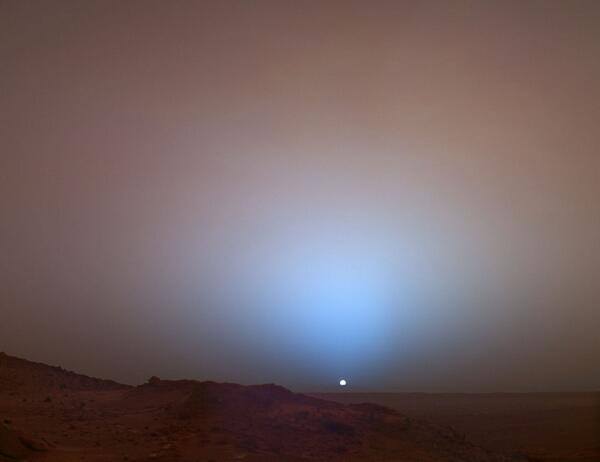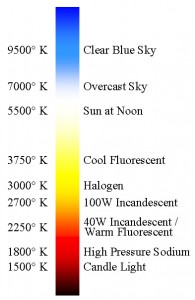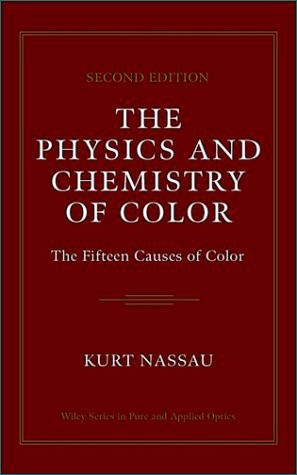I’ve been much outdoors lately, brainstorming my storyline, making notes and traveling. The idea for this post came after I’ve spent the whole day observing daylight and its hues.
If you had ever wondered what colors of light your world has, I might have an easy answer for you. But I think some would want to see the hues for themselves. Well, I do.
Before moving to the main dish I must say this method only works for earth-type atmospheres (unless you know color temperatures for other atmospheres).

I also assume our observer is human (his/her eyes are adapted to solar spectrum which peaks at 501 nm, green-yellow portion of it) and we have a single star.
The distribution of a wide variety of physical, biological, and man-made phenomena follow a power law, including the sizes of earthquakes, craters on the moon and of solar flares, the foraging pattern of various species, the sizes of activity patterns of neuronal populations, the frequencies of words in most languages, frequencies of family names, the sizes of power outages and wars, and many other quantities. And I’m making this mathematical relationship my instrument of choice as well.
So, what we need to do is simply compare two stars. (Don’t frown; it’s easy, assuming you use a spreadsheet program).
First of all we’ll need the properties of our Sun and the properties of the star in question (for our examples I will use two stars of spectral classes FV and KV, the Sun being the GV star). These properties are effective temperatures in Kelvins and masses relative to solar. That’s it. The mass of the star is arguably its most important property. And I’m using it as the main component in my power law equation to get what I want. And what I want is the color temperature of illumination. What we are going to do is not very scientific, but it works well under our condition of earth-type atmosphere.
The Sun’s effective temperature is 5778 K and its mass is 1. The F star will be 7500 K and 1.4 solar masses. The K star will be 3700 K and 0.45 solar masses.
My next step will be determining the power relations between the Sun and each of the two stars. I’m using MS Excel spreadsheet, so my formulas look approximately like this:
Exp = LOG(7500; (5778*1.4)) = 0.9916 for our F star
Exp = LOG(3700; (5778*0.45)) = 1.0449 for our K star
For other masses and effective temperatures you’ll need a recalc, of course.
Now then, let’s move onto the next part to get the hues of daylight.
Color temperatures
Color Temperature is a measurement in degrees Kelvin that indicates the hue of a specific type of light source. Color temperatures attributed to different types of light are correlated to visible colors matching a black body (e.g. a star), and are not the actual temperature. High color temperatures are considered “cold” and low are considered “warm”.
Color temperature would not be such an important factor in color perception if people were not adaptable. Our eyes will adjust to various light sources which have different color temperatures. And even though the power spectrum density of the light is different, we still see the light as white.
Simply put, color temperature is the tendency of different “white light” sources to change our perception of a color. The color temperature of a light source causes the colors of everything illuminated to change, but the change is often barely noticeable.

The effect of sunlight on the perceived color of an object changes with temperature because of how much air the sunlight has to pass through. If the sun is directly overhead (warmer), it passes through less air than it does when it is low on the horizon (cooler). Colors in northern climates, especially in the winter, look different than they do in southern climates.
The processes of absorption and scattering in the atmosphere are responsible for the apparent colors of the sun and the sky. While sunlight falls only on non-shadowed areas, the light of the sky falls on everything, so shadow hues are determined by sky color. The hue gradient is clearly noticeable when the sun and the sky obviously differ in color, like near the sunrise and sunset, and the difference in colors of shadowed and illuminated parts becomes the clearest on light surfaces such as snow.
The color temperatures for solar illumination (outdoors) are:
- Sunlight (sunrise or sunset) – 2000 K – 3000 K
- Sunlight (1 hour after dawn) – 3500 K
- Sunlight (early morning and late afternoon) – 4300 K
- Sunlight (average noon, summer, mid-latitudes) – 5000 – 5400 K
- Daylight (sunlit sky) 5500 – 6500 K
- Overcast sky / haze – 6000 K
- Light summer shade – 7100 K
- Average summer shade / hazy sky – 8000 K
- Open shade on clear day – 9000 K
- Heavily overcast sky – 10000 K
- Sunless blue skies – 11000 -12000 K
- Open shade in mountains on a really clear day – 20000 K
In order to get our alien hues, we need to do some simple math again. For our example I will take the color temperature for solar sunrise/sunset, 2000 K. The general formula for our stars will be the following:
TCs=(CTe*Mstar)^Exp
TCs is the color temperature of stellar light in the atmosphere, CTe is the light color temperature from the hue list above, Mstar is the mass of the star relative to solar, and Exp is what we calculated in the previous step.
For our F star the average sunrise/sunset hue will be 2619 K, brighter and sharper than the Sun’s; for our K star this hue will be around 1221 K, dimmer and softer than the candle light. To see these temperatures in color, you might consider this chromaticity (hue and saturation) table.
Also, check out this page of the The Planetary Habitability Laboratory (PHL) >> Sunset of the Habitable Worlds.
Recommended read: The Physics and Chemistry of Color: The Fifteen Causes of Color by Kurt Nassau, 2nd Ed, 2001.
Have you ever wondered why the sky is blue, or a ruby red? This classic volume studies the physical and chemical origins of color by exploring fifteen separate causes of color and their varied and often subtle occurrences in biology, geology, mineralogy, the atmosphere, technology, and the visual arts. It covers all of the fundamental concepts at work and requires no specialized knowledge.
This is an excellent scientific overview of human perception of color.
The book IS expensive, but if you have access to a good library, it is a good choice.


This is an awesome post (like MUCH EVERYTHING ELSE on your site to be honest)! I love the degree of scientific accuracy and I will most definitely come back here for worldbuilding info and reference.
Thank you so very much, Jelena. You rock!
Thanks Veronica,
to be honest, I stopped writing these too geeky articles since not many people are into this. But now I know I have at least one reader. *happy dance*
Two readers. I was directed here by a Scribophile member after asking a question about the possibility of a green sky on a human-habitable world.
Is there a color temperature that would cause the sky to appear green? What effect would that light have on vegetation? Would such a world be comfortable for humans to live on?
I am writing a story about humans crashed on an alien world. They have to be able to breathe the air, and they have to forage to survive, so the vegetation must be edible. Do you know if such a world is possible under a green sky? The green sky isn’t pivotal to my story, but I think it would be fun.
Thanks for your time.
Kathy, there are several options for your world.
For humans to breathe on an alien world, the atmospheric composition would have be pretty similar to what the Earth has(because we have limitations for what to breathe — I wrote about limitations here: http://jenomarz.com/the-four-elements-a-quest-for-atmosphere/) Unless, of course, you have genetically modified humans to suit different conditions. Anyway, regardless of what star you might have, the colors will be in the similar color spectrum as ours. The dimmer the star, the more pallid the blue sky tinge will be (closer to greyish, perhaps, because dimmer stars, such as M starts, have less blue light in their spectrum.)
What the vegetation be adapted to depends on the light of the star.
The sky color is the result of scattering in the atmosphere. Our sky is blue because the blue part of sunlight is scattered by particles in our air.
But here’s where the fun part starts.
On Earth green skies are created when sunlight refracts through hailstones high in the atmosphere. For the hailstones to reach that altitude, the updraft of warm air must be powerful. Sometimes, this powerful updraft can create severe weather, like large hailstorms or possibly tornadoes. So, in a way, green skies are potential indicators of severe weather, but not necessarily tornadoes.
The tremendous amount of water vapor might also have such effect. So, if your planet has a large amount of water vapor in the atmosphere, the sky might look greenish. The green is a result of the scattering out of blue to the point that the green tint of light can be dominant. But then again, it would probably be hard to breathe in such atmosphere for a human.
And one more thing. Since we are talking fiction here, perhaps the green sky effect might be caused by a layer of harmless (or harmful – you decide) microscopic plant cells suspended in the middle atmosphere. After the rain the parts of the sky might appear blue.
As for edible vegetation — unless it is biochemically related to these humans, it won’t be edible. These people would not be able to digest such plants. Unfortunately.
I hope this helps. if you have further questions, feel free to ask!
~J